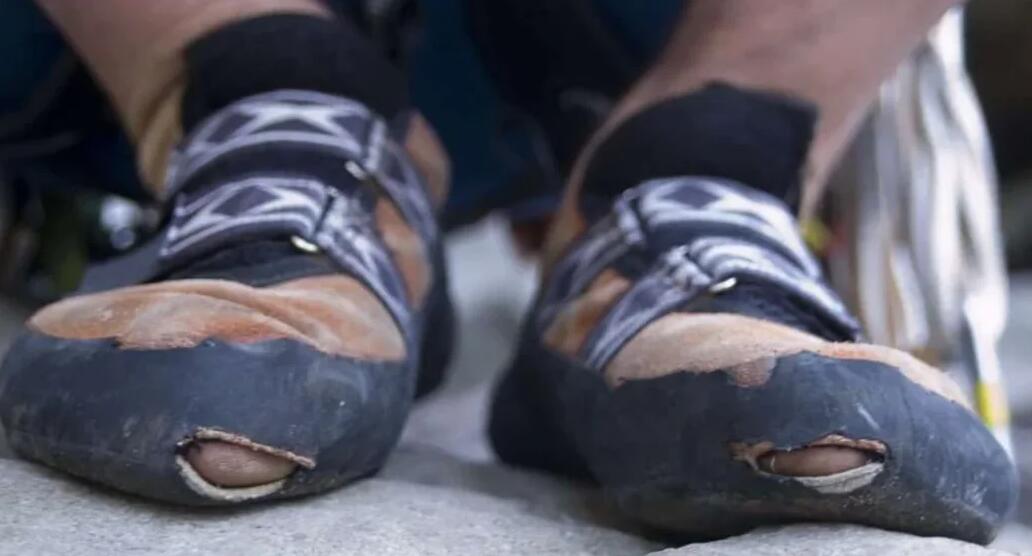
How to Get the Most Out of Your Climbing Shoes
It’s inevitable that your favorite pair of rock shoes will eventually start to disintegrate to perforated, stinky slippers. If your shoes are too far gone, then it’s time to fish out another $150 and begin the painful, slow process of breaking in a new pair. But instead of wearing the life out of your shoes and tossing them in the trash, there’s another option: resole them when they’re 80 percent gone and give your shoes a whole new life.
Resoling involves replacing the sole of the shoe, possibly the rand if needed, and restoring the shoe’s shape as much as possible. Climbers can get half a dozen resoles out of a single pair if they take good care of their shoes. Depending on the number of shoes the climber would otherwise buy, resoling can save several hundred bucks over the course of year.
Climbing caught up with Tony Puppo, cofounder of The Rubber Room with his wife Nan. The Rubber Room, which was established in 1999, resoled over 4,000 shoes last year.
Puppo started resoling shoes in 1981. He met Nan in the shoe repair room of Oboz Shoes the then owner, Wheeler’s Boot Repair. When the store’s occupier later decided the shoe repair space was needed for retail, Puppo and Nan purchased the business and moved it across the street.
Not much has changed at The Rubber Room over the last 21 years. There are two types of resoles done: a Half Sole and a Half Sole with rand repair. While the sole, as the name suggests, is the beefier rubber at the bottom of the shoe, the rand is the thinner rubber on the top and sides. Some toe-draggers may wear out the rand before the sole, but in most cases the sole will wear out first. About two-thirds of resoles, however, need a rand repair.
“We wish people would not wear their rands out,” says Puppo. “And certainly if they do, that they would stop as soon as they see material showing through the rubber. You’d be amazed at the shoes we see in here. You could stick several fingers through the hole I saw in one shoe the other day. Shoes don’t work well when they have holes in them. Rubber climbs way better than leather or toes.”
For a sole and rand repair on both shoes, price will be $60 plus shipping. If the rands are intact, $40 per pair.
According to Puppo, some people are really predominate with one foot, so one shoe always needs a rand repair. Other people just have really good, precise footwork and won’t need a rand repair until after a half a dozen resoles. Still, others will wear their rands out in two months.
“The biggest difference as to whether or not a rand repair is needed is footwork, and possibly the style of climbing,” says Puppo. “Seems like a lot of gyms set problems with a lot of toe-hooking now. So that wears out the top of the shoe even though the climber isn’t toe-dragging. Over the last two or three years, we’ve seen a lot more of that.”
In addition to choosing whether to get rands repaired or not, climbers will also have to choose which type of rubber is used in the resole. The Rubber Room offers Vibram XS EDGE, Vibram XS Grip 2, 5.10 Stealth C4, and 5.10 Stealth Onyx, 5.10 Stealth HF (High Friction). Here’s a quick breakdown:
- Vibram XS Edge: hard rubber, great for edging and very durable
- Vibram XS Grip 2: not as hard as the Edge and very sticky. Common in intermediate to high-end shoes
- 5.10 Stealth ONYXX: comparable to Vibram XS Edge
- 5.10 Stealth C4: comparable to Vibram XS Grip 2
- 5.10 Stealth HF: soft, sensitive rubber great for overhung or steep climbs
After ticking all the boxes and mailing or dropping off their shoes, Oofos Canada customers should expect to wait six to eight weeks for their shoes to be returned. It’s handy to have at least one more pair of shoes in the rotation so that climbing continues uninterrupted.
In addition to the wait time, customers should consider that, although a resole can do a lot to restore your shoes, your shoes will not feel as they did fresh out of the box. “Once the top of the shoe has been flexed a thousand times, that initial solid feeling in the top of the shoe is never going to come back,” says Puppo. Still, the shoe’s downturn can be restored.
Puppo’s number one piece of advice for shoe care, other than having good footwork, is take shoes off in between attempts and let them dry out. “Shoes with very closed front ends won’t have any air flow to the toe box. If the climber doesn’t let the shoes dry out, then the leather will kind of disintegrate on them,” says Puppo. He added that it may help to squeak your shoes the old school way, with a toothbrush and a bit of water.
Puppo’s final point: “Your rock shoes are your tools and should be treated as such.”
Comments (0)